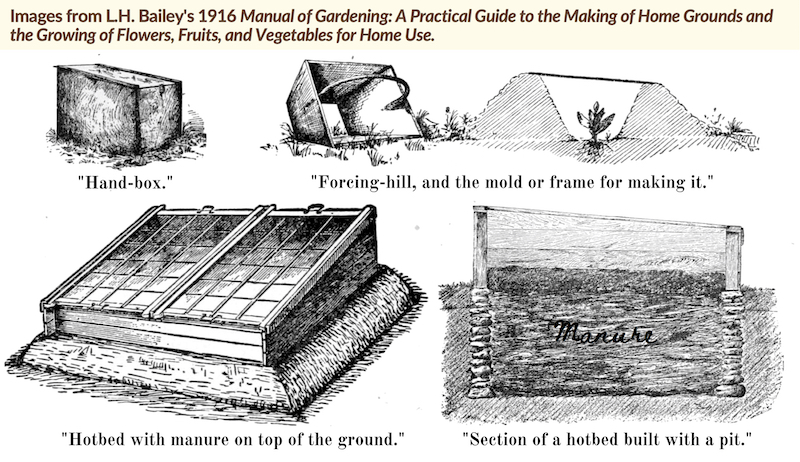
Say you’ve always wanted a greenhouse. (Or maybe you wish you had an even bigger one?) Relying on hot and cold frames can actually help scratch that itch. Both are simple to make—and simply invaluable for earlier spring starts and prolonged fall harvests.
Hot and cold frames can be temporary and portable, extra-sturdy and permanent, large or small. Best of all, you don’t need a lot of expensive equipment to construct them. If you have some old windows, a little scrap wood, or even a few straw bales, you’re in business.
Ultimately, what size and type of season-extenders you choose depends on your gardening goals and your area climate.
Cold Frames
Cold frames act as passive solar collectors. Warmed by the sun’s rays, the temperature inside the cold frame climbs. Ideally, your cold frames should face south, southeast or southwest. And, if possible, locate them so that they can get up to five or six hours of available sunlight per day.
One of the most common cold frame designs is a simple rectangular box topped with an old window or a panel of heavy plastic sheeting. Typically, the backside of the box is taller than the front, so that the glass panel rests at an angle.
This helps to maximize the amount of sunlight collected.
You can use a cold frame to help toughen up young seedlings in preparation for transplanting them into the garden. Cold frames are also suitable for starting some kinds of seedlings early. And, when erected around late-season tomatoes or cold-tolerant veggies like kale, you can use them to prolong your harvest into late fall and early winter.
Cold frames can even help shelter fall garden seedlings during the heat of late summer. For this use, however, you need to put your cold frame in a shady spot and keep it moist.
Read more: Want to extend your growing seasons? Consider a low tunnel!
Small but Mighty
Besides the usual cold frame designs, you might opt for some of the lesser-known and much smaller types. Originally published in 1910, L.H. Bailey’s Manual of Gardening showcases an impressive array of “forcing-hills” and “hand-boxes.”
One type of “forcing-hill,” a hand-box enables gardeners to plant (and protect) a seed directly in the garden three or four weeks early. “[The hand-box] is a rectangular box, without top or bottom, and a pane of glass is slipped into a groove at the top,” Bailey explains. “The earth is banked up slightly about the box, in order to hold it against winds and to prevent the water from running into it.”
He continues, “After the plants are thoroughly established in these forcing-hills, and the weather is settled, the protection is wholly removed, and the plants grow normally in the open.”
Although not so practical for large farm operations, hobbyists could use these to give a few special plants an extra-early start. (For instance, I plan to build some hand-boxes to give my Skyscraper sunflowers extra in-garden growing time this year.)

Hot Frames
In addition to the sun’s heat, hot beds make use of alternate, radiant heat sources. They’re especially helpful for getting an extra-early start on warm-weather crops like peppers and tomatoes.
Provided you’re able to supply power to the area, you can bury special, thermostat-controlled heated coils along the bottom of the hot bed. (Here are some plans for one such bed.)
Or you can go really low-tech—with a thick layer of fermenting manure. Bailey notes, “The pit should be a foot wider on either side than the width of the frame. Upon the ground a layer of an inch or two of any coarse material is placed to keep the manure off the cold earth. Upon this, from twelve to thirty inches of manure is placed. Above the manure is a thin layer of leafmold or some porous material, that will serve as a distributor of the heat, and above this is four or five inches of soft garden loam.”
Manure-heated hot frames can remain hot for two to three months.
Read more: Check out these 7 tools you need for handling manure.
Pro Tips
Whether you create hot or cold frames, you’ll likely want them to go the distance year after year. If you’ve used old windows, keep the glass clean and make sure all window glazing is intact. For season-extenders made with plastic sheeting, check for holes or tears and repair or replace as needed.
You’ll also want to keep any wood—used in windows or box frame walls—painted to protect it from the elements.
Finally, to make sure your plants don’t overheat, keep a thermometer just inside the frame (but out of direct sunlight). Provide adequate water and, on really sunny days, prop up the frame’s top slightly to allow for extra air circulation.




